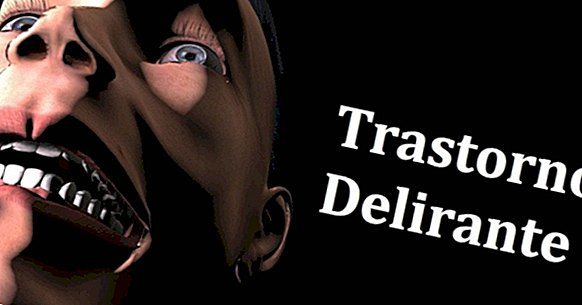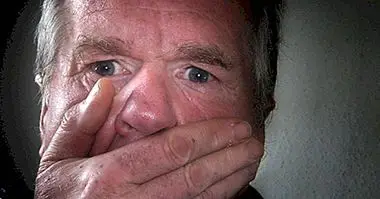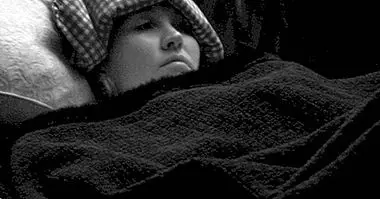Delirious disorder (paranoid psychosis): causes, symptoms and treatment
The Delirious Disorder , also known as Paranoid Psychosis, is a psychotic disorder. This disorder manifests itself with the presence of delusional ideas and thoughts, unrelated to reality, and without the presence of another basic psychopathology.
- Recommended article: "The 8 types of psychotic disorders"
Delirious disorder: what is it?
But, What are the signs and signs that we can see in a person suffering from Delusional Disorder? The diagnosis of this disorder must be made by a mental health professional, and guided by several diagnostic criteria:
- Delirious ideas must be presented for more than a month
- The picture of delusions should not be the product of the abuse of toxic substances, drugs or other pathologies
Symptoms and signs
How do people with Delusional Disorder behave? The picture of paranoid psychosis usually manifests in the fact that people who suffer from it are totally convinced of things that are not real . For example, they may believe that they are famous athletes or successful singers, and from there think that people are chasing and harassing them on the street, or have paranoia thinking that there are people who want to harm them in some way.
This psychiatric involvement is usually encompassed within the group of psychopathologies in which a single delusional idea is manifested, or else a series of delusions closely linked to each other and which remain over time, being difficult to treat and persisting, in many cases , until the end of the life of the affected individual.

What kind of delusions do these people suffer?
Exactly, what goes through the heads of these people? Delirious ideas can vary greatly from one subject to another. They are usually paranoid thoughts related to delusions of greatness, hypochondria or persecution and harassment .
In other cases, the Delirious Disorder may manifest itself with recurrent thoughts and no real basis on infidelity of the sentimental partner, or the belief that others think that the subject is homosexual, for example.
Causes
Delirious Disorder can debut at any time of life. In cases where delirium refers to deformities of some part of the body, it usually appears at the beginning of adulthood.
The content of the delirious thoughts and the age of beginning of the same ones can keep a quite direct link with some experiences and experiences that can affect their psychological stability. It has been described that, on occasion, Paranoid ideas of persecution are more frequent in individuals belonging to historically disadvantaged ethnic minorities . Beyond the behaviors and attitudes linked to delusional ideation, these patients usually have no involvement in their empathy, in their communication skills or in general in any other important aspect.
Characteristics of Paranoid Psychosis
As we have commented, people suffering from Delusional Disorder they suffer recurrent and unreal ideas, thoughts and beliefs . Despite this, sometimes these delusions do not directly affect their daily routine.
- In most cases, work and social life may not be negatively influenced by the psychopathological picture, unless delusions appear in those contexts. However, it is noteworthy that patients with this disorder usually present an irascible and, in some extreme, aggressive mood.
- As for their way of being, they tend to show reserved and elusive, and do not talk openly about their affectation.
- They may present unconnected ideas to each other, but for them all their thought patterns seem logical and grounded.
Most frequent types of delirious ideas
Mental health professionals describe up to four large groups of delusions according to their main characteristics . They are the ones described below.
1. Persecution delusions
It is the most common type of delirium. The person who suffers he lives thinking that he is the victim of a conspiracy , and that is spied on and followed by the street, constantly.
2. Delusions of grandeur
This kind of delirium causes the sufferer to be convinced that he is someone important, a celebrity. For example, they may think that they have an exceptional talent or that in their past they were renowned athletes, singers or thinkers.
3. Somatic delusions
It's a group of delusions that affect the perception of one's own body . The most common are: the belief that they smell bad, think that a part of the body grows uncontrollably, etcetera.
4. Erotomaniacal delusions
Is about the unreal belief and maintained in time that someone loves them madly . It is more frequent in women, and they believe they receive letters, hidden messages or signals from their "lover", who is usually an important person for her (a teacher, a famous soccer player, a singer, an actor ...). They can even get in touch with the man in whom they think through calls, messages, gifts, and correspondence.
5. Delusions of the jealous type
They think repeatedly that their romantic partner is with other people . This belief that their partner is unfaithful is based on erroneous conjectures that are based on delirium. It can be a danger because this belief, in some cases, motivates physical aggression.
Treatments and therapies
We have talked about the characteristics of Delusional Disorder, but: Is it possible that these people are cured, or at least improve their psychological normality?
There is a series of psychological treatments that help to control the symptoms, decreasing their impact and recurrence and allowing the patient to think and structure their perception of reality in a non-pathological way.
The clinical psychologist can contribute enormously to the recovery of the person affected by Delirious Disorder. Through the therapeutic sessions, and progressively, the psychologist can guide the patient to explain their thoughts and delusions, explore these contents and emotions and, slowly, get to identify the errors in their thinking schemes.
One of the most accepted therapeutic currents is Cognitive-Behavioral Therapy, which focuses on achieving changes in delusional beliefs and their psychological, emotional and behavioral effects. It is a good idea to encourage people suffering from this disorder to go to a psychologist or psychiatrist of trust, who can guide and guide them to significantly improve their quality of life.
Bibliographic references:
- Belloch, A .; Sandín, B. and Ramos, F. (2006). Manual of Psychopathology. (2 Vol). Madrid; McGrawHill.
- López-Ibor Aliño, Juan J. & Valdés Miyar, Manuel (dir.). (2002). DSM-IV-TR. Diagnostic and Statistical Manual of Mental Disorders. Revised text. Barcelona: Editorial Masson.
- Salavert, J. and others. (2003). Delirious disorder Reviewing aspects of paranoia. Benito Menni Mental Health Care Complex Barcelona. Available at: //www.researchgate.net/profile/Luis_San/publication/237358989_El_trastorno_delirante_Revisando_los_aspectos_de_la_paranoia/links/00b7d51e7953bbcccd000000/El-trastorno-delirante-Revisando-los-aspectos-de-la-paranoia.pdf



















